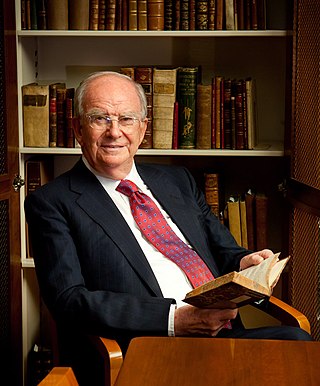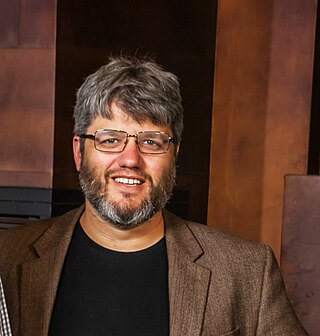
Catalysis is the increase in rate of a chemical reaction due to an added substance known as a catalyst. Catalysts are not consumed by the reaction and remain unchanged after it. If the reaction is rapid and the catalyst recycles quickly, very small amounts of catalyst often suffice; mixing, surface area, and temperature are important factors in reaction rate. Catalysts generally react with one or more reactants to form intermediates that subsequently give the final reaction product, in the process of regenerating the catalyst.

In acid catalysis and base catalysis, a chemical reaction is catalyzed by an acid or a base. By Brønsted–Lowry acid–base theory, the acid is the proton (hydrogen ion, H+) donor and the base is the proton acceptor. Typical reactions catalyzed by proton transfer are esterifications and aldol reactions. In these reactions, the conjugate acid of the carbonyl group is a better electrophile than the neutral carbonyl group itself. Depending on the chemical species that act as the acid or base, catalytic mechanisms can be classified as either specific catalysis and general catalysis. Many enzymes operate by general catalysis.

Sir John Meurig Thomas, also known as JMT, was a Welsh scientist, educator, university administrator, and historian of science primarily known for his work on heterogeneous catalysis, solid-state chemistry, and surface and materials science.

Eugène Jules Houdry was a mechanical engineer who graduated from École Nationale Supérieure d'Arts et Métiers in 1911. Houdry served as a lieutenant in a tank company in the French Army during World War One, receiving the French Legion of Honour. He helped innovate catalytic cracking of petroleum feed stocks, for which he received the Perkin Medal among others.
In chemistry, phase-boundary catalysis (PBC) is a type of heterogeneous catalytic system which facilitates the chemical reaction of a particular chemical component in an immiscible phase to react on a catalytic active site located at a phase boundary. The chemical component is soluble in one phase but insoluble in the other. The catalyst for PBC has been designed in which the external part of the zeolite is hydrophobic, internally it is usually hydrophilic, notwithstanding to polar nature of some reactants. In this sense, the medium environment in this system is close to that of an enzyme. The major difference between this system and enzyme is lattice flexibility. The lattice of zeolite is rigid, whereas the enzyme is flexible.
Reactive flash volatilization (RFV) is a chemical process that rapidly converts nonvolatile solids and liquids to volatile compounds by thermal decomposition for integration with catalytic chemistries.

Lanny D. Schmidt was an American chemist, inventor, author, and Regents Professor of Chemical Engineering and Materials Science at the University of Minnesota. He is well known for his extensive work in surface science, detailed chemistry (microkinetics), chemical reaction engineering, catalysis, and renewable energy. He is also well known for mentoring over a hundred graduate students and his work on millisecond reactors and reactive flash volatilization.
Kathleen C. Taylor is a chemist who won the Garvan–Olin Medal in 1989, and is notable for developing catalytic converters for cars.
Paul Ratnasamy is an Indian catalyst scientist, INSA Srinivasa Ramanujan Research Professor and a former director of National Chemical Laboratory of the Council of Scientific and Industrial Research (CSIR). He was honored by the Government of India, in 2001, with one of the highest Indian civilian awards of Padma Shri.
Maria Flytzani-Stephanopoulos was a Greek chemical engineer and, at the time of her death, had been the Robert and Marcy Haber Endowed Professor in Energy Sustainability and a distinguished professor at Tufts University. Flytzani-Stephanopoulos had also been the Raytheon Professor of Pollution Prevention at Tufts. She published more than 160 scientific articles with over 14,000 citations as of April 2018. She was a Fellow of AIChE, the American Association for the Advancement of Science and American Institute of Chemical Engineers. She lived in the Greater Boston Area with her husband, Professor Gregory Stephanopoulos of MIT.
Michael Tsapatsis is an American chemical engineer and materials scientist. Tsapatsis is the 36th Bloomberg Distinguished Professor at Johns Hopkins University in the Department of Chemical and Biomolecular Engineering. Prior to this position he was the Amundson Chair (2008–present), professor (2003-present), and McKnight Presidential Endowed Chair (2017–present) in the department of chemical engineering and Materials Science at the University of Minnesota. Prior to his appointment at the University of Minnesota, Tsapatsis was an associate professor at the University of Massachusetts Amherst.
Raymond John Gorte is an American chemical engineer, currently the Russel Pearce and Elizabeth Crimian Heuer Endowed Professor of Chemical and Biomolecular Engineering (CBE) and Materials Science & Engineering (MSE) at the University of Pennsylvania. Throughout his career at the University of Pennsylvania and the University of Minnesota, he has advanced the study of fuel cells and catalysts including heterogeneous metals and zeolite materials. He is a member of the U.S. National Academy of Engineering.
Herman Pines was a Russian Empire-born American chemist. Born in Łódź—then part of the Russian Empire—he left his hometown as a young man as Jewish quotas and other anti-Jewish practices prevented Jewish students from attending university. After earning a degree in chemical engineering at the École Supérieure de Chimie Industrielle de Lyon in France, he worked at Universal Oil Products from 1930 to 1952. Pines also worked at Northwestern University beginning in 1941, and served from 1953–1970 as the Ipatieff Research Professor of Chemistry and director of the Ipatieff High Pressure and Catalytic Laboratory.

Jingguang Chen is a Chinese-American chemical engineer. He is the Thayer Lindsley Professor of Chemical Engineering at Columbia University, with a joint appointment as Senior Chemist at the U.S. Department of Energy (DOE) Brookhaven National Laboratory. Over the course of his career Chen has made significant contributions to the fundamental understanding and use of novel materials for catalytic and electrocatalytic applications. Central to his research efforts have been the development of bimetallic and transition metal carbide catalysts that eliminate or significantly reduce the loading of expensive precious metals.
In chemistry, catalytic resonance theory was developed to describe the kinetics of reaction acceleration using dynamic catalyst surfaces. Catalytic reactions occurring on surfaces that undergo variation in surface binding energy and/or entropy exhibit overall increase in reaction rate when the surface binding energy frequencies are comparable to the natural frequencies of the surface reaction, adsorption, and desorption.

Paul Dauenhauer, a chemical engineer and MacArthur Fellow, is the Lanny & Charlotte Schmidt Professor at the University of Minnesota (UMN). He is recognized for his research in catalysis science and engineering, especially, his contributions to the understanding of the catalytic breakdown of cellulose to renewable chemicals, the invention of oleo-furan surfactants, and the development of catalytic resonance theory and programmable catalysts.
Steven L. Suib is an American inorganic chemist, academic and researcher. He is a Board of Trustees Distinguished Professor of Chemistry at University of Connecticut. He is a director of the Institute of Materials Science and of the Center for Advanced Microscopy and Materials Analysis.

Jorge Gascon is a Professor of Chemical Engineering at King Abdullah University of Science and Technology, director of the KAUST Catalysis Center. and a group leader of Advanced Catalytic Materials group
Alexis Tarassov Bell is an American chemical engineer. He is currently the Dow professor of Sustainable Chemistry in the Department of Chemical and Biomolecular Engineering in UC Berkeley's college of chemistry. He is also the Faculty Senior Scientist at Lawrence Berkeley National Laboratory. He is known for his work with heterogenous catalysts and characterizing the mechanisms of these reactions on a quantum level.
Thomas E. Müller is a German chemist and an academic. He is Professor of Carbon source and Conversion at Ruhr-Universität Bochum.







